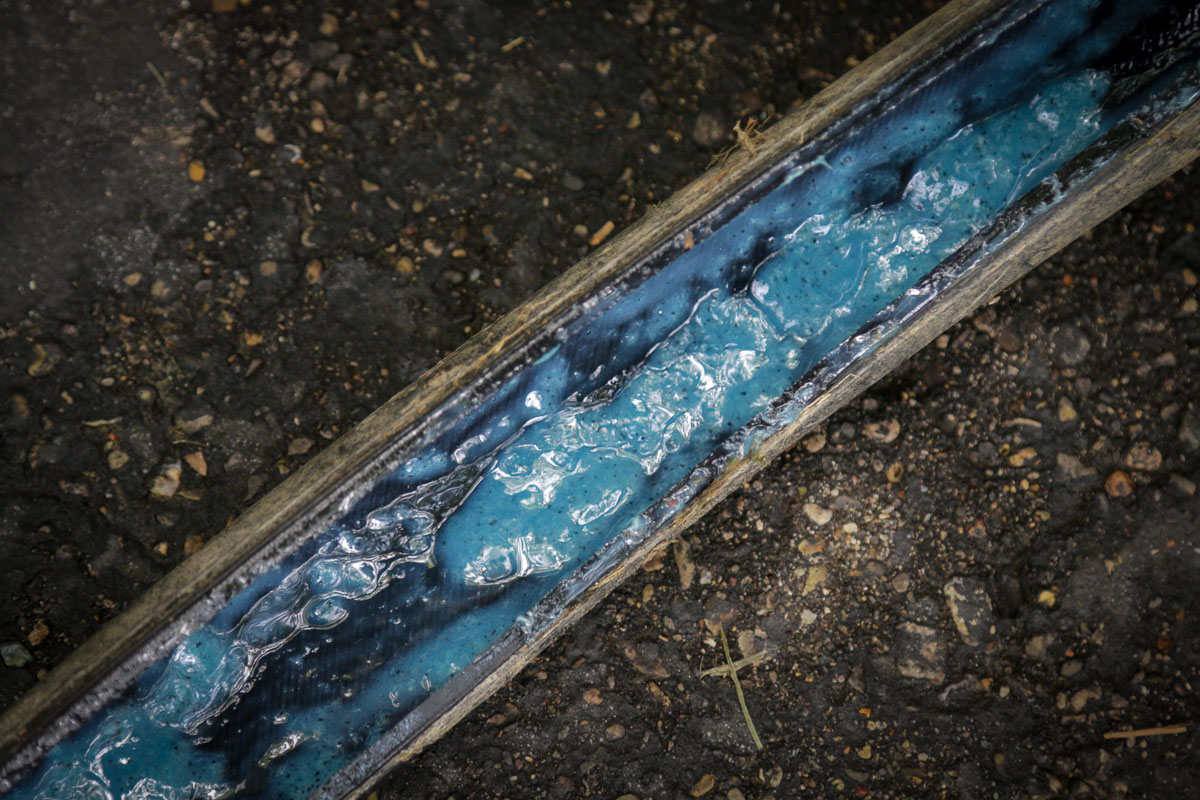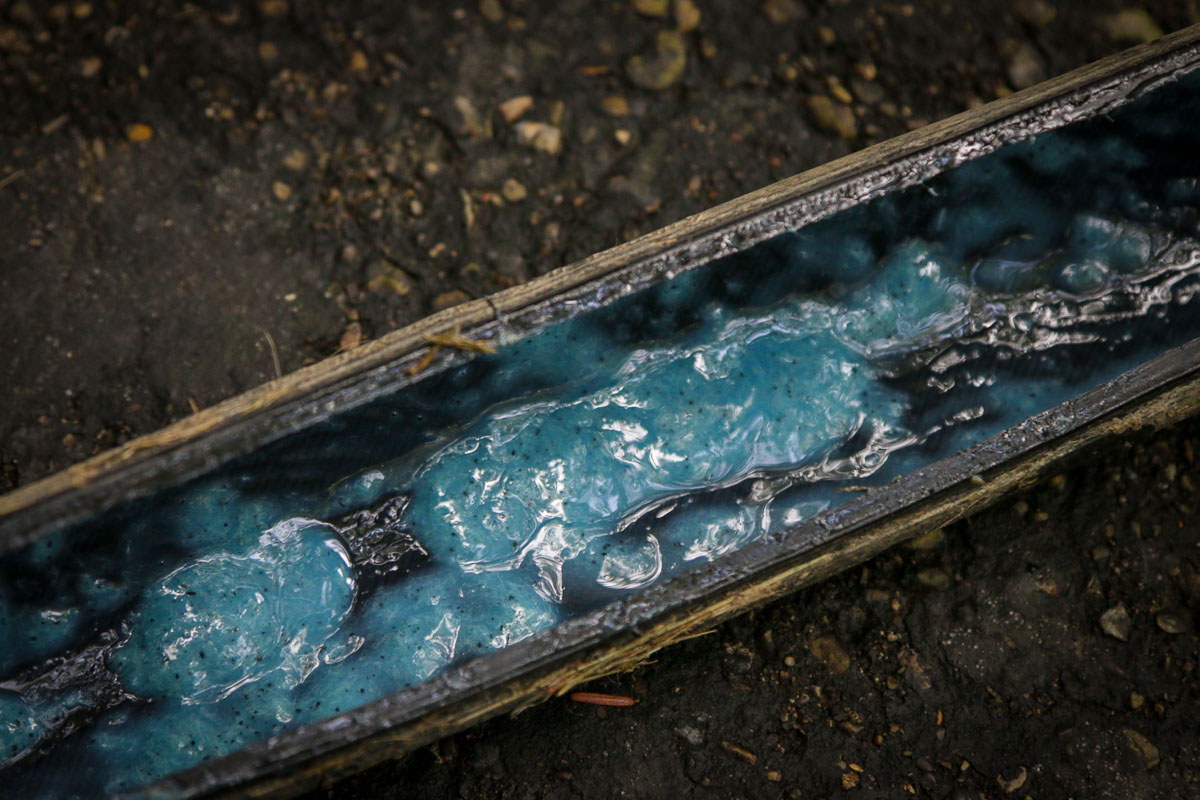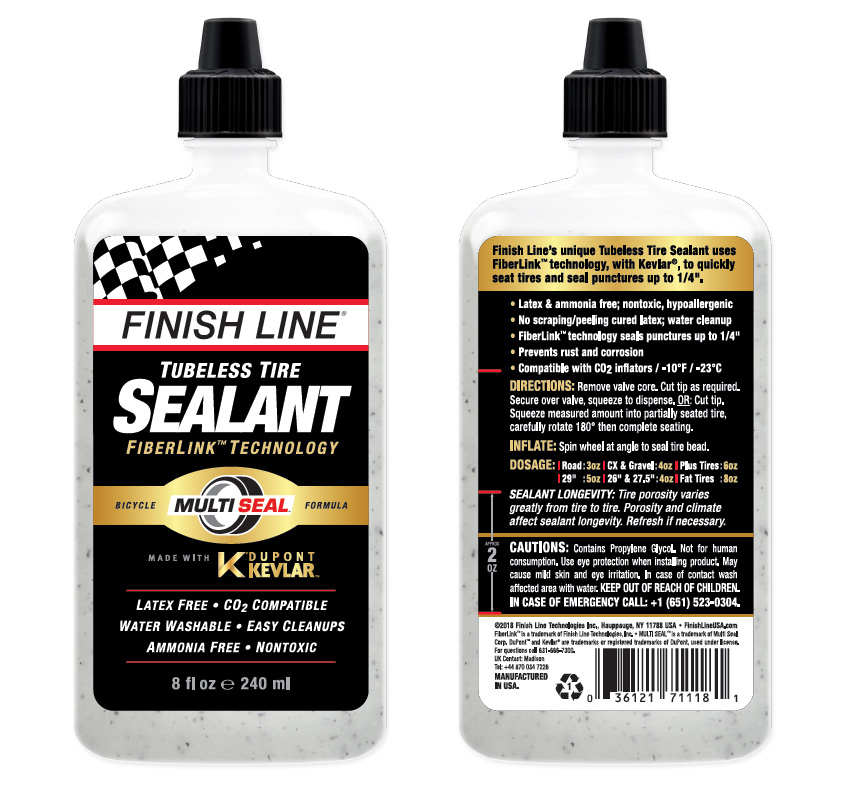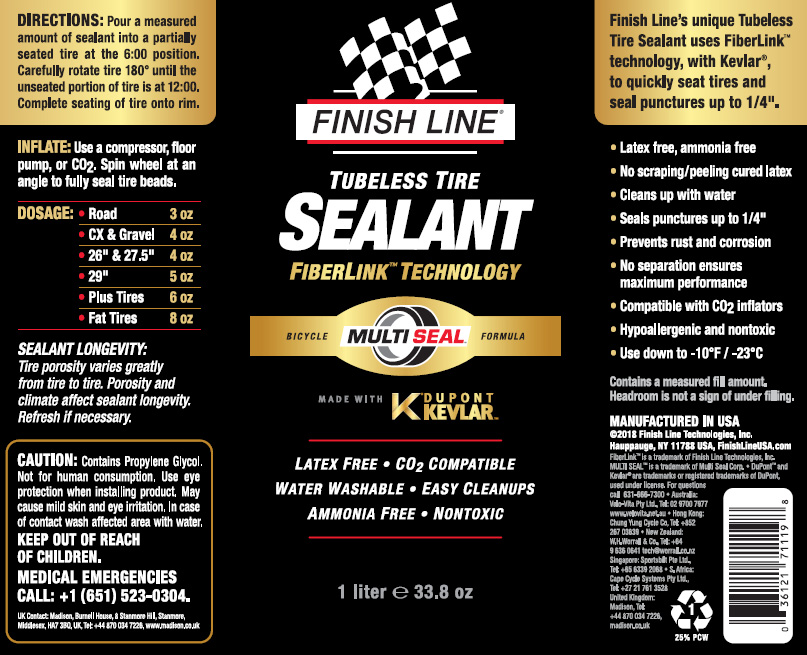Diamonds are forever. Finish Line’s Tire Sealant? Well, that depends on who you ask. Greatly. After 6 months of testing, the sealant in my bike is still going strong. But others have had major issues right out of the gate. The vastly different performance has been enough for Finish Line to dial back their claims of a “lifetime sealant” – but the sealant is only part of the equation…
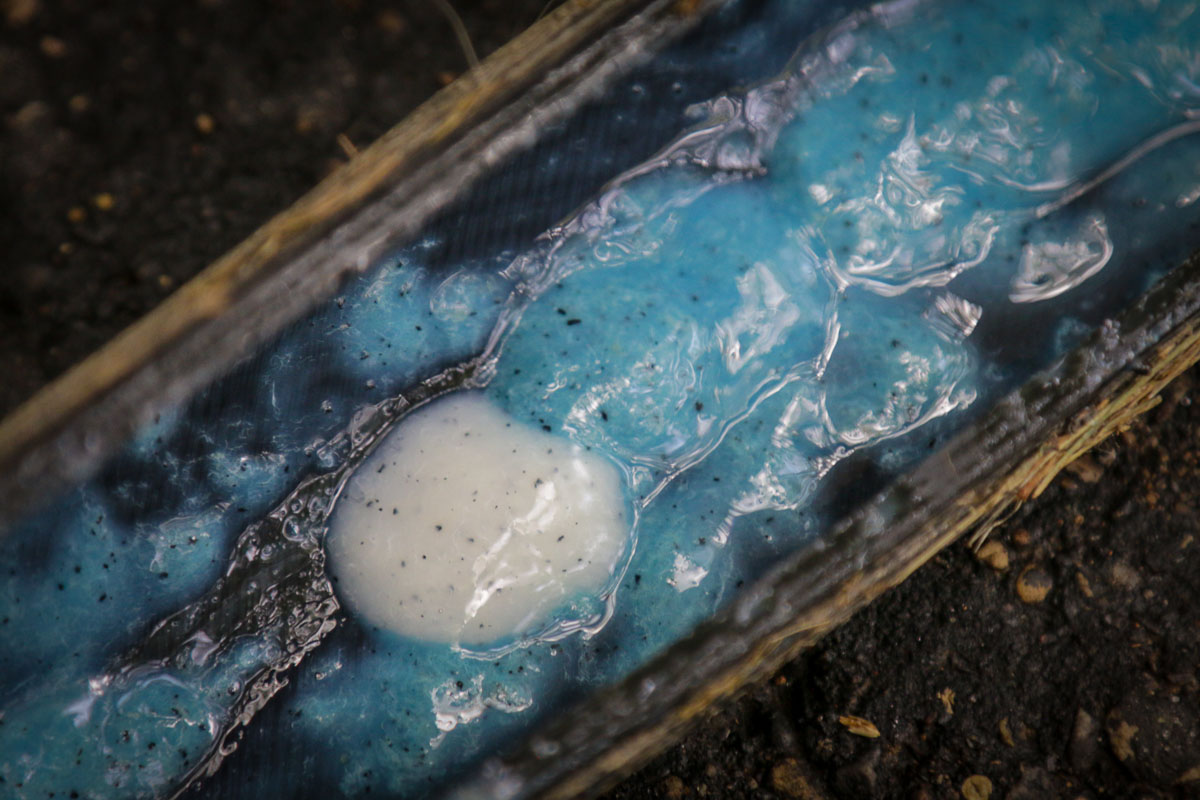
My first true experience with the tire sealant came when a competing sealant (an unknown white sealant with floating particles, that was definitely not Stan’s) failed to seal a puncture on my Lauf True Grit test bike. I refused to put in a tube, so every quarter mile or so I was off the bike with my pump – not exactly ideal.
When I got home, I pulled the tire, cleaned the inside of the current sealant (there was a lot still inside), and installed the Finish Line sealant in both tires. As soon as I aired up the tire, it sealed the hole instantly, which was a slit that measured about 3mm long.
And that was it. The Finish Line sealant plugged the leak without spraying all over the place or weeping through the hole, and I went for a ride the next day without needing to add any more air to the tire. The tires are to the point of needing replacement soon, and I’ve not had a flat yet.
It remained that way for the six months until now when I pulled off the tire just to see what was going on inside. Like many others have experienced, the sealant had turned from white to blue, which Finish Line claims is a result of the carbon black colorant in the tire reacting with the sealant. This is apparently purely cosmetic, and has no effect on the performance of the sealant itself.
It’s also worth noting that the sealant was still liquid and easily moved around inside the tire. It also coated the entire rim channel and tire itself without really pooling in any one place.
However, my tire had an early advantage, and it’s one that may explain why I have had such great luck with the sealant. Since the tire was previously sealed with a latex based sealant, the porosity of the tire had already been decreased. Even with cleaning of the inside of the tire, there were still micro holes that had likely been filled with the latex based sealant, which likely contributed to the improved performance of the sealant. It’s the same reason why Finish Line’s sealant will stay liquid in the bottle indefinitely – it’s air tight. And the less porous the tire is, the better the sealant performs. Which is why…
Finish Line no longer claims it’s a lifetime sealant
Finish Line is a company made up of great people, which is why as soon as they started hearing reports of the sealant not working properly, they immediately stopped shipping the product. After extensive testing to verify why only certain customers were having issues, the company made the decision to change the labeling on the sealant and eliminated the claim that it is a life time sealant that never needs refreshing.
In a letter sent out to their distributors and dealers, Finish Line’s CEO Henry Krause said, “Following the launch of Finish Line’s tire sealant in March 2018, we have learned a lot about the nuances of this category. For example, tire porosity varies greatly from tire to tire. In fact, some tires are extremely porous. Overly porous tires, can cause the water portion of our sealant to evaporate through the walls of the tire. This causes the viscosity of the sealant to thicken and with it, a reduction in sealing performance is likely to occur. This phenomenon is magnified in warm weather conditions.
In short, the longevity and performance of Finish Line sealant has the potential to be negatively affected by climate and overly porous tires, thus requiring a refresh.”
The company felt that it was important to change the labeling and make sure that the product reflected their marketing claims.
The root of the problems
For those that have had problems with the sealant, there are a few potential culprits. First, the tire may just be too porous. This is something that Finish Line has seen with certain brands and models being more porous than others, which allows more of the water portion of the sealant to evaporate, which causes the sealant to thicken. It’s not just the Finish Line sealant either – if you’ve ever noticed liquid weeping out of the sidewalls of your tire, this is why.
In this case, Finish Line’s recommendation is to simply refresh the sealant and add more. Since there is no latex, nothing is curing, and by adding more sealant you’re refreshing the carrier and it should slow the evaporation slightly. And if you’re wondering, they’ve tested just adding water to the sealant, but it didn’t work.
Another common issue is simply not using enough sealant in the first place. Compared to other sealants, the Finish Line sealant needs more for any given size tire. If you’re not using enough sealant in the first place, you’re going to have issues. The current minimum dosages per tire are below:
- Road – 3oz
- CX & Gravel – 4oz
- 26 & 27.5″ MTB – 4oz
- 29″ MTB – 5oz
- 4″ fat bike – 7oz
- 5″ fat bike – 9oz
Finally, for those that have had trouble setting up the tires initially, Finish Line has some additional advice. Since the sealant is thicker than average, it sometimes struggles to fill the gaps when seating a tire for the first time. To counter that, Finish Line recommends installing the tire on the rim (without seating it), adding the sealant through the valve core, and then rolling the tire on a flat surface to help “prime” the bead with sealant before you seat the bead. This gets the sealant between the bead and the rim and helps to seal things up once you add air.
Takeaway
Long story short, is the Finish Line Sealant worth your time and money? While it may no longer be marketed as a life time sealant, it still has a number of benefits. Since it’s latex free, it’s super easy to clean, non-toxic, and has no ammonia. It also seems to seal holes as well as any tire sealant – we’ve all had punctures that a sealant wouldn’t plug, but in my experience at least, it’s worked quite well. However, the tire porosity problem is a real concern. If your tires are too porous to keep the Finish Line Sealant from evaporating too quickly, it’s hard to recommend that you buy another sealant to coat the inside of the tire before switching back to the Finish Line sealant.
The bottom line is that it has the potential to work, just not for every tire and every rider out there. And considering how well most of the other sealants work on most tires, it’s hard to recommend the Finish Line sealant at this point. But Finish Line mentioned that they are actively working on new formulations to enhance or refine the performance and offer even better sealing. The company took a gamble on a completely new form of tubeless tire sealant, and while everything hasn’t gone as planned, there’s a lot of potential for the future.
